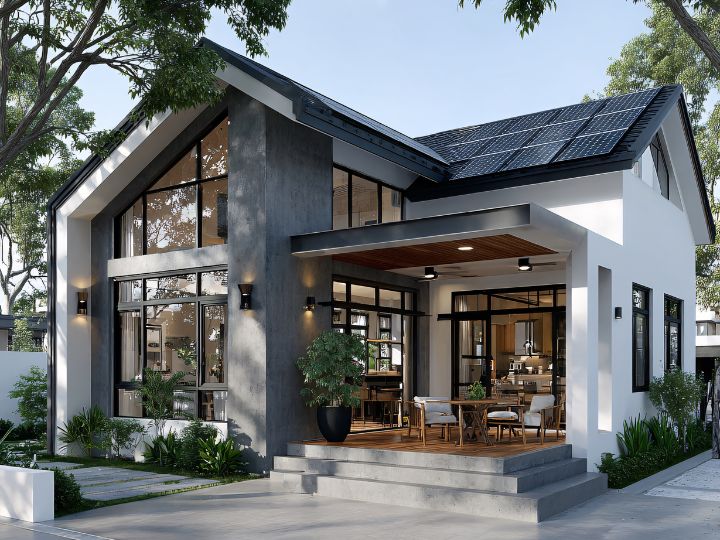
Maximize Space With an Open Concept Kitchen Renovation

An open concept kitchen renovation can transform your home, creating a spacious and inviting environment that fosters interaction and modern living. By removing barriers between the kitchen and other living areas, you can enhance both functionality and aesthetic appeal. This guide explores the key elements and benefits of an open concept kitchen renovation, helping you maximize your space and enjoy a more connected and flexible living area.
1. Benefits of Open Concept Kitchens
Open concept kitchens offer numerous advantages:
- Enhanced Flow and Connectivity: Removing walls between the kitchen, dining, and living areas creates a seamless flow, allowing for easier movement and communication.
- Increased Natural Light: With fewer walls, natural light can flood the space, making it feel brighter and more open.
- Versatile Design: An open concept layout provides flexibility in design and functionality, allowing you to customize the space to fit your lifestyle.
- Improved Social Interaction: The open layout fosters social interaction, making it easier to entertain guests and engage with family members while cooking.
Embracing an open concept kitchen can significantly enhance the overall feel and functionality of your home.
2. Design Considerations
When planning an open concept kitchen renovation, consider the following design elements:
- Layout: Decide on a layout that maximizes the flow between spaces. Common configurations include an island or breakfast bar that serves as a natural divider between the kitchen and living areas.
- Zoning: Create distinct zones within the open space for cooking, dining, and lounging. Use furniture, rugs, or different flooring materials to visually separate these areas while maintaining an open feel.
- Lighting: Incorporate a mix of ambient, task, and accent lighting to ensure the space is well-lit and visually appealing. Pendant lights over the island, recessed lighting, and under-cabinet lights are popular choices.
- Color Scheme: Choose a cohesive color scheme that complements the adjacent living areas. Light and neutral colors can enhance the sense of openness and brightness.
Thoughtful design considerations ensure that your open concept kitchen is both functional and aesthetically pleasing.
3. Choosing the Right Materials
Selecting the right materials is crucial for achieving a cohesive and stylish open concept kitchen:
- Flooring: Opt for continuous flooring materials that flow seamlessly between the kitchen and adjacent areas. Hardwood, engineered wood, and large-format tiles are popular choices.
- Cabinetry: Choose cabinetry that complements the overall design of the space. Custom or semi-custom cabinets can be tailored to fit the open layout and provide ample storage.
- Countertops: Select durable and attractive countertops that enhance the kitchen's visual appeal. Quartz, granite, and marble are excellent choices for high-end finishes.
High-quality materials contribute to the overall elegance and functionality of your open concept kitchen.
4. Creating a Functional Island
An island is often the centerpiece of an open concept kitchen, providing both practical and aesthetic benefits:
- Seating: Incorporate seating at the island to create a casual dining or socializing area. Barstools or counter-height chairs can be used to accommodate guests and family members.
- Storage: Design the island with built-in storage solutions, such as cabinets or drawers, to keep essential items within reach and reduce clutter.
- Cooktop: Consider installing a cooktop or sink on the island for added functionality and convenience.
A well-designed island enhances the functionality and social aspects of your open concept kitchen.
5. Integrating Technology
Modern technology can enhance the functionality of your open concept kitchen:
- Smart Appliances: Invest in smart appliances that offer connectivity and advanced features, such as remote control, voice activation, and energy efficiency.
- Home Automation: Integrate home automation systems to control lighting, temperature, and security from your kitchen, adding convenience and efficiency.
- Built-In Entertainment: Incorporate built-in speakers or a television into the design to create an entertainment hub within the open space.
Integrating technology improves the functionality and modernity of your open concept kitchen.
6. Maintaining Visual Continuity
To achieve a cohesive look, ensure visual continuity between the kitchen and adjacent living areas:
- Consistent Design Elements: Use consistent design elements, such as matching cabinetry, countertops, and flooring, to create a harmonious transition between spaces.
- Decor: Choose decor and furnishings that complement the open concept layout. Coordinating colors, textures, and styles help maintain a unified aesthetic.
Maintaining visual continuity ensures that your open concept kitchen seamlessly integrates with the rest of your home.

7. Incorporating Storage Solutions
Effective storage solutions are essential in an open concept kitchen to keep the space organized and clutter-free:
- Pantry: Design a walk-in or built-in pantry to store dry goods and kitchen essentials.
- Cabinet Organizers: Utilize cabinet organizers, such as pull-out shelves, lazy Susans, and built-in dividers, to maximize storage space and accessibility.
- Hidden Storage: Consider incorporating hidden storage options, such as under-bench drawers or toe-kick drawers, to keep items out of sight.
Innovative storage solutions ensure that your open concept kitchen remains functional and organized.
8. Considering Structural Changes
An open concept renovation may require structural changes to remove walls or adjust load-bearing supports:
- Consult a Structural Engineer: Before making structural changes, consult a structural engineer to assess the feasibility and ensure the integrity of your home.
- Permits: Obtain the necessary permits for any structural modifications, as required by local building codes.
Proper planning and professional consultation are essential for a successful open concept kitchen renovation.
9. Balancing Open and Closed Storage
A balanced approach to storage is key in an open concept kitchen:
- Open Shelving: Incorporate open shelving to display attractive kitchenware and add visual interest.
- Closed Cabinets: Use closed cabinets to store less visually appealing items and maintain a tidy appearance.
Balancing open and closed storage helps create an organized and aesthetically pleasing kitchen.
10. Personalizing the Space
Personalize your open concept kitchen to reflect your style and preferences:
- Custom Details: Add custom details, such as unique hardware, custom cabinetry features, or personalized decor, to make the space truly your own.
- Artwork and Accessories: Incorporate artwork and accessories that complement the design and add a personal touch.
Personalizing the space ensures that your open concept kitchen is both functional and uniquely yours.
Conclusion
An open concept kitchen renovation can transform your home, creating a spacious, connected, and modern living area. By considering design elements, materials, functionality, and personalization, you can achieve a seamless and stylish open concept kitchen that enhances your lifestyle and adds value to your home.
For expert guidance on open concept kitchen renovations, contact us today. Let’s work together to create a kitchen that maximizes your space and elevates your home.
Latest Blogs
Transform your dream home into reality with our premier renovation services!
Book a call with us today and let's create the perfect space tailored just for you.

.svg)
.svg)



